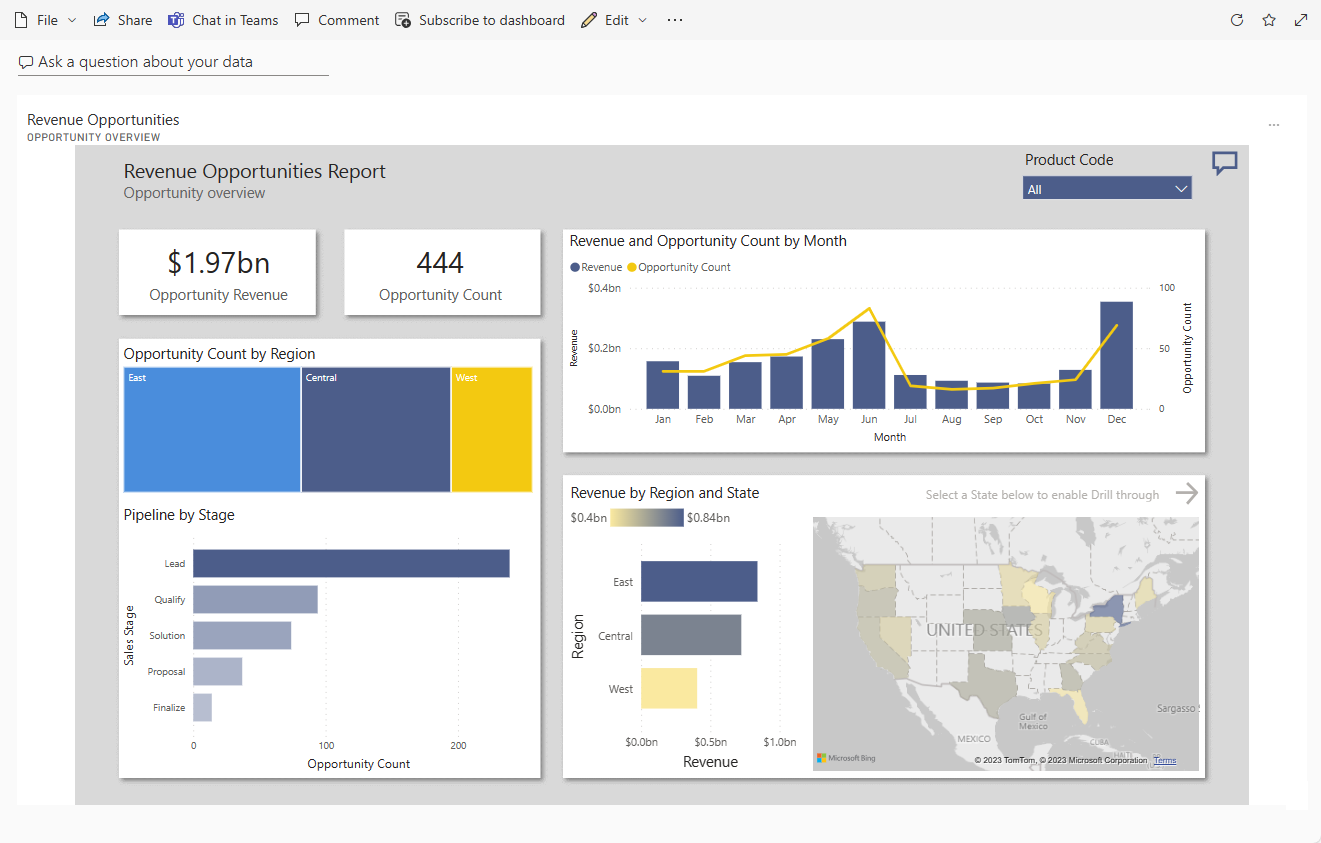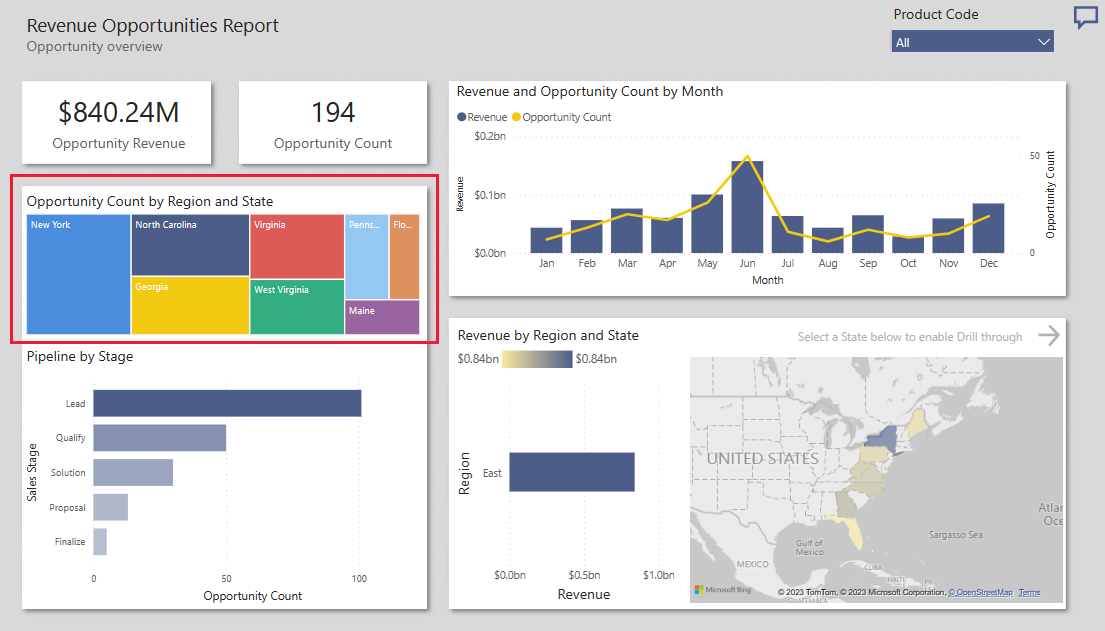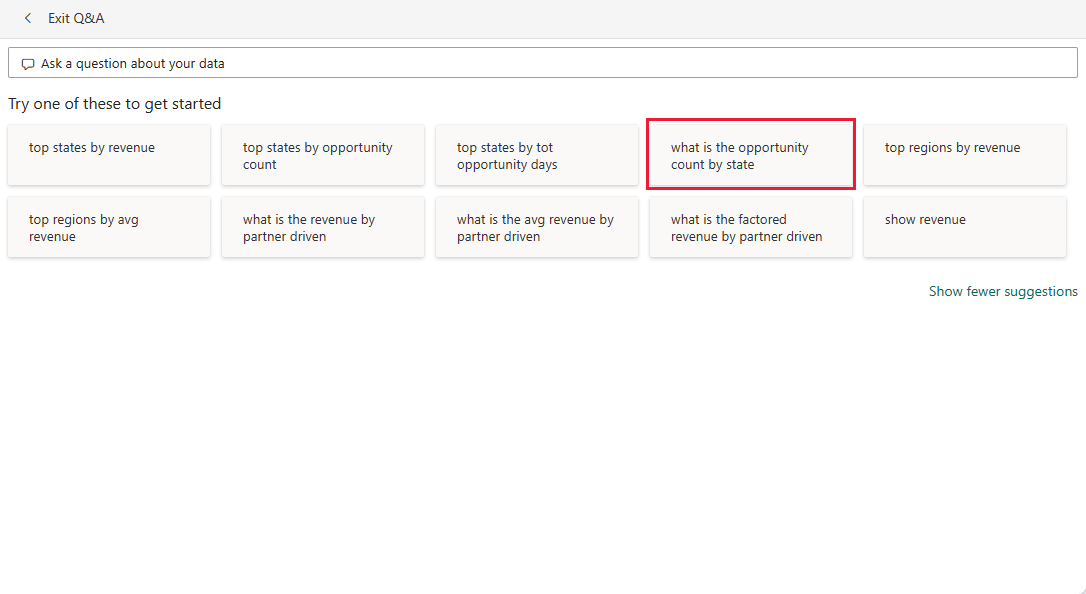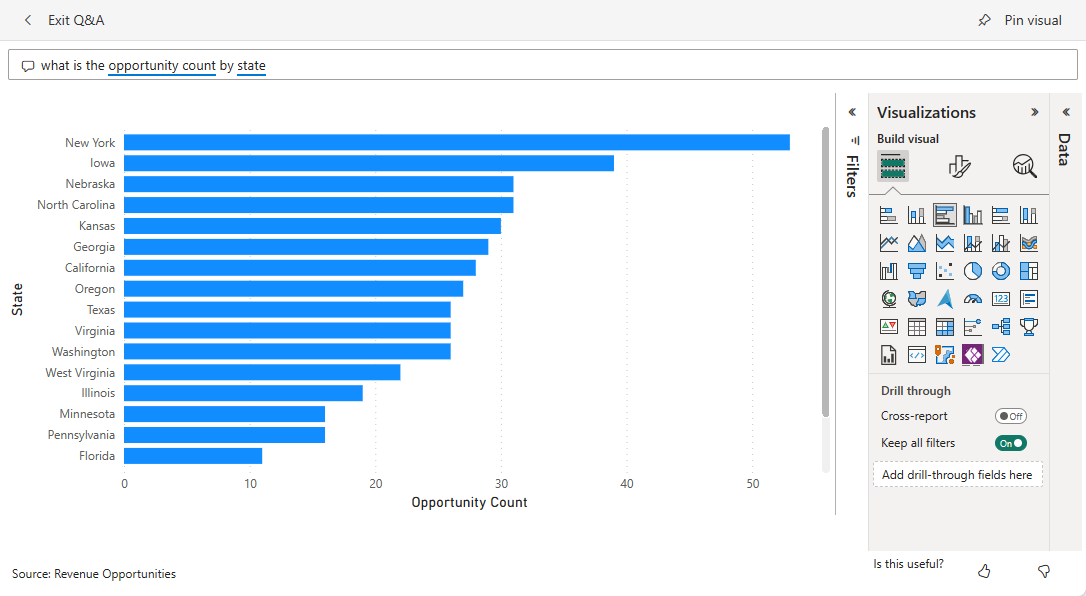Note
Access to this page requires authorization. You can try signing in or changing directories.
Access to this page requires authorization. You can try changing directories.
The Revenue Opportunities built-in sample contains a report and semantic model for a software company that has two sales channels: direct and partner. The sales manager created this dashboard to track opportunities and revenue by region, deal size, and channel.
This sample is part of a series that shows how you can use Power BI with business-oriented data, reports, and dashboards. The company obviEnce created samples using real, anonymized data. The data is available as a built-in sample in the Power BI service and a .pbix Power BI Desktop file. For more information, see Samples for Power BI.
This tour explores the Revenue Opportunities built-in sample in the Power BI service. Because the report experience is similar in Power BI Desktop, you can also follow along by using the sample .pbix file in Power BI Desktop.
Prerequisites
You don't need a Power BI license to explore the samples in Power BI Desktop. You just need a Fabric free license to explore the sample in the Power BI service, and save it to your My workspace.
Get the sample
Before you can use the sample, get the sample in one of the following ways:
- Get the built-in sample in the service.
- Download the .pbix file.
Get the built-in sample
Open the Power BI service (
app.powerbi.com), and select Learn in the left navigation.On the Learning center page, under Sample reports, scroll until you see the Revenue Opportunities sample.
Select the sample. It opens in Reading mode.
Power BI imports the built-in sample, adding a report and semantic model to your My workspace.
Get the .pbix file for this sample
Alternatively, you can download the Revenue Opportunities sample as a .pbix file, which is designed for use with Power BI Desktop.
Open the GitHub Samples repository to the Revenue Opportunities sample .pbix file.
Select Download in the upper-right corner. The sample downloads automatically to your Downloads folder.
If you'd like to view it in the Power BI service, you can publish it there.
Open the file in Power BI Desktop and select File > Publish > Publish to Power BI or choose Publish in the Home ribbon.
In the Publish to Power BI dialog box, choose a workspace, and then Select.
Power BI imports the sample, adding the report and semantic model to your selected workspace.
Explore the report
To open the Revenue Opportunities report, go to your workspace and select the Revenue Opportunities report.
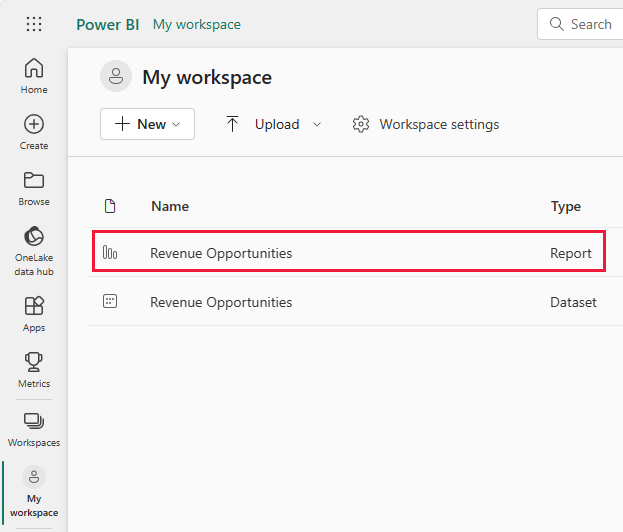
You can edit current visualizations and create your own visualizations that use the semantic model for this sample. This environment is a safe one to play in, because you can choose not to save your changes. But if you do save them, you can always return to the Learning center for a new copy of this sample.
Select Edit in the Power BI header bar to explore in the editing view:
- See how the pages are made, the fields in each chart, and the filters on the pages.
- Add pages and charts, based on the same data.
- Change the visualization type for each chart.
- Pin charts of interest to your dashboard.
Save or discard your changes.
Opportunity Overview page
The Opportunity Overview page of the report has two card visualizations, a tree diagram, and other visualizations. Stakeholders can interact with different visualizations to understand your data.
Under Pages, select Opportunity Overview if the page isn't already open. Card visualizations display a single number. Cards display values for Opportunity Revenue and Opportunity Count.
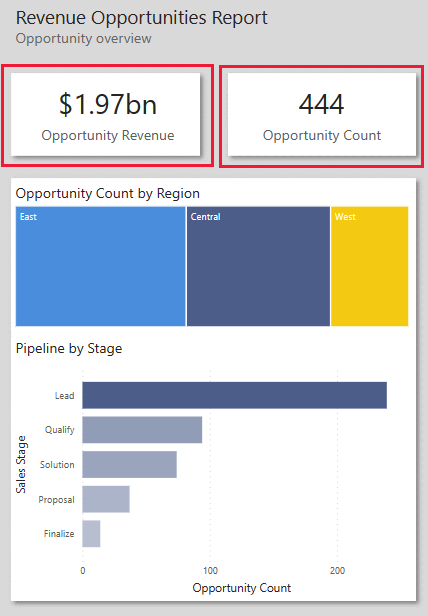
A treemap visualization of the Opportunity Count by Region appears below those cards. Right-click the East region. In the context menu, select Drill down.
The visualization now shows the component areas that make up the East region. The other visualizations now reflect only the East region.
Now select a product from the Product Code selector.
Right-click Opportunity Count by Region. From the context menu, select Drill through > Detail. The report opens the Detail page for the data that you're examining.
Select the Opportunity Overview page to return to that report page. In Opportunity Count by Region, right-click. Select Drill up to see all regions again.
You can select a field in any visualization to view that data for that selection in all the visualizations.
Hover over any field to see the details of that field as a tooltip. A Power BI report provides a default value for tooltips. You can add any value to the tooltips for a visualization. For more information, see Customize tooltips in Power BI.
Create a Revenue Opportunities dashboard
A Power BI dashboard is a single page that contains visualizations that can come from one or more reports, and each report is based on one semantic model. You can also generate visualizations on the dashboard by using the Q&A Ask a question about your data feature to explore the data associated with a report. Think of a dashboard as an entryway into the underlying reports and semantic models. Select a visualization to take you to the report that was used to create it.
To create a dashboard in the Power BI service:
Open a report by selecting it in a workspace.
To add all of the visualizations in a page to a dashboard, from the report menu, select ... (More options) > Pin to a dashboard.
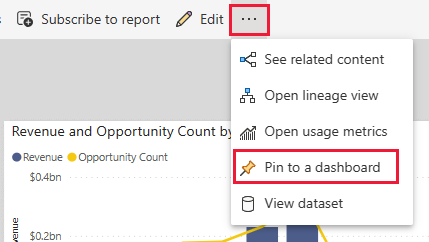
Or, to add a single visualization to a dashboard, hover over it and then select Pin visual.
In Pin to dashboard, select New Dashboard and enter a name for your dashboard.
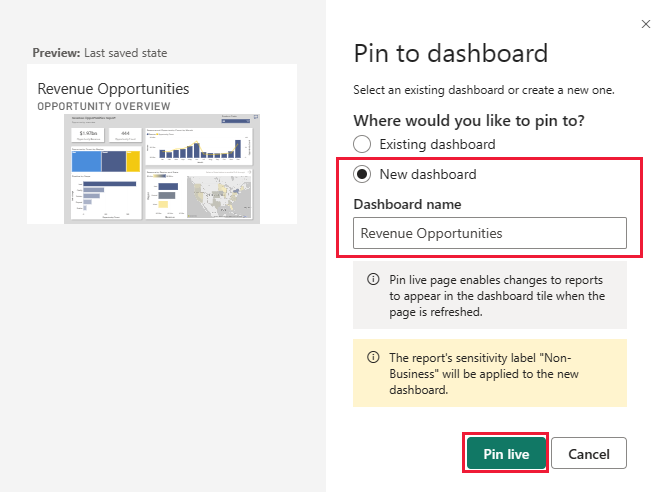
You can add visuals to an existing dashboard to show visualizations from different reports.
Then select Pin live.
Your new dashboard now appears in My workspace.
For more information, see Introduction to dashboards for Power BI designers.
Create new dashboard visualizations
A dashboard offers the ability to ask questions about data in natural language to create visuals. It doesn't matter how you create your dashboard or which tiles it has. You can ask questions about any semantic model attached to your dashboard.
In the dashboard, select Ask a question about your data.
Select a question, such as what is the opportunity count by state. The dashboard creates a bar chart.
You can add more data fields to your question. Try what is the opportunity count by state by fact month or what is the opportunity count by state by factored revenue.
You might want a different way to present this information than a bar chart. Update your question to what is the opportunity count by state as a map. The dashboard displays the same data as a map. Look under Visualizations where the map is selected.
Try some other visualizations. There are different bar charts, scatter charts, and line charts. You can select a table to display the data as numbers. Find a visualization that presents your data in the best way for your purposes. For more information about visualizations, see Visualization types in Power BI.
To save your visualization to a dashboard, select Pin visual.
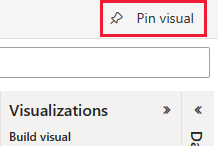
You can save it to this current dashboard or create a new dashboard for it, as you did in the previous section.
Related content
This environment is a safe one to play in, because you can choose not to save your changes. But if you do save them, you can always return to the Learning center for a new copy of this sample.
We hope this tour has shown how Power BI dashboards and reports can provide insights into sample data. Now it's your turn. Connect to your own data. With Power BI, you can connect to a wide variety of data sources. To learn more, see Get started creating in the Power BI service.
